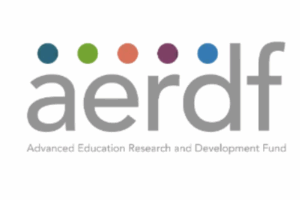Jobs & Careers
Exploring NotebookLM Alternatives – KDnuggets


Image by Author | Ideogram
# Introduction
As AI research and productivity tools continue to evolve, NotebookLM by Google has emerged as an assistant for synthesizing information from user-uploaded documents. However, its limitations in customization, data privacy, and feature scope have led many users to seek alternative solutions. Fortunately, several alternatives offer unique capabilities, from deeper AI integrations to enhanced collaboration features.
In this article, we explore the top alternatives to NotebookLM and what sets them apart. By the end, you’ll be better equipped to choose a research assistant that matches your style.
# 1. NousWise
Website: NousWise
An AI-powered tool designed to help users learn through personalized questions and concise explanations. It emphasizes active recall and spaced repetition.
Key Features:
- Unlimited uploads: Add as many documents as you want, including PDFs, images, tables, graphs, and more, as it supports a wide variety of formats.
- Verified answers: Reads through your content and gives answers with detailed citations so you can always check where the information came from.
- Private and secure: Keeps your data safe and private, accessible only to you unless you choose to share it.
- Context-aware search: Learns from all your notes over time, so each search is sharper and more personalized, like having a long-term memory.
Limitations:
- Freemium constraints: The free tier is limited and higher tiers are subscription-based.
- Maturing ecosystem: As a newer tool, it may lack integrations, community plugins, or the long-term stability that established platforms provide.
# 2. ElevenLabs
Website: ElevenLabs
A leading AI voice synthesis platform offering hyper-realistic voice generation. It’s widely used for audiobooks, video narration, and voice cloning.
Key Features:
- High-quality TTS: Uses state-of-the-art AI models to create natural, conversational narrations with two AI co-hosts to mimic a real podcast.
- Voice cloning: Instantly replicate your voice from just minutes of audio, or opt for professional-grade cloning with over 30 minutes of recording.
- Developer-friendly API/SDK: Provides SDKs and APIs (Python, TypeScript, etc.) for integrating voice features into your apps or services.
Limitations:
- Studio project limits: Limited to 3 projects, where each can have up to 500 chapters. Each chapter can contain up to 400 paragraphs, with a maximum of 5,000 characters per paragraph.
- Privacy concerns: Handling voice data, especially cloning, raises data consent and security questions, so users must review terms carefully.
# 3. NoteGPT
Website: NoteGPT
A productivity tool that leverages GPT to summarize, organize, and generate notes from content sources. It’s useful for turning long videos or documents into concise study material.
Key Features:
- Content Summarization: Summarizes PDFs, videos, articles, PPTs, and images into concise notes, mind maps, and presentations.
- Visual outputs: Automatically converts summarized content into visually structured mind maps, slide decks, podcasts, and infographics.
- YouTube tools: Extracts transcripts, segments them, answers questions, and produces summaries with support for batch summarization and translation.
Limitations:
- Bias and accuracy: Outputs might emphasize certain points disproportionately and may misinterpret nuanced discussions.
- Privacy shortfalls: May or may not be up to GDPR compliance, and so cautious investigation is advised for EU users.
# 4. Notion
Website: Notion
An all-in-one workspace for notes, tasks, wikis, and databases. It’s highly customizable and popular among teams and solo users alike.
Key Features:
- All-in-One Workspace: Notion combines notes, tasks, wikis, databases, calendars, and forms into a single highly flexible and collaborative workspace.
- Notion Mail: Email client integrated with Gmail that provides auto-labeling, templated replies, and meeting scheduling functionality.
- Notion Calendar: Syncs with Google and Apple iCloud, links events to pages and databases, and enables unified time management directly within Notion.
- Automations & Templates: Supports automations in databases, no-code page layouts with forms and grids, and provides thousands of community and official templates.
Limitations:
- Free plan constraints: Limited to 1,000 blocks for shared workspaces, 5 MB file attachments, 7 days of version history, and max 10 guest collaborators.
- Offline support limitations: Offline access exists but is unreliable and can prevent full editing capabilities when disconnected.
# 5. Evernote
Website: Evernote
A classic note-taking app that helps users capture ideas, organize documents, and manage tasks. It’s known for its web clipping and multi-device syncing features.
Key Features:
- Multimedia Note Capture: Supports text, images, PDF files, audio recordings, handwritten notes, and web clippings via a browser clipper.
- Cross-Platform Sync: Accessible on Windows, macOS, iOS, Android, and web, with offline access and real-time sync.
- Web Clipper: Its browser extension captures full articles, PDFs, images, and selected text directly into Evernote for later reference.
- Tasks & Reminders: Inline checklists, to-do lists, deadlines, and Google Calendar integration for workflow management.
Limitations:
- Reduced monthly uploads: Free users have tight limits on monthly upload volume and note size, restricting heavy usage.
- Cloud risk: While Evernote uses encryption (SSL, AES-256), storing sensitive information still poses a risk.
# 6. Obsidian
Website: Obsidian
A markdown-based note-taking app focused on linking thoughts and knowledge management. Power users favor it for building personal knowledge bases (PKMs).
Key Features:
- Local-first markdown storage: Stores notes in plain-text markdown files on your device, ensuring full control and offline access.
- Cross-platform Availability: Available on Windows, macOS, Linux, iOS, and Android, with optional end-to-end encrypted sync and version history.
- Highly extensible plugins/themes: Provides thousands of community and core plugins and hundreds of themes to customize functionality and appearance.
- Internal Linking & Graph View: You can create bidirectional links between notes and visualize connections using an interactive graph.
Limitations:
- Performance issues: Large vaults can cause slowness in note operations like creation, renaming, and deletion.
- Steep learning curve: It heavily depends on Markdown syntax and customization via plugins and themes, which can overwhelm newcomers.
# What to Consider When Choosing an Alternative
When evaluating alternatives, consider the following factors:
| Criteria | Why It Matters |
| Data Privacy | Is your data stored locally or in the cloud? |
| File Format Support | Can it handle PDFs, Word docs, and text files? |
| Integration | Does it work with your current tools (e.g., Notion, Word)? |
| Usability | Is the interface clean and easy to navigate? |
| Cost | Is there a free plan, or does it fit your budget? |
# Conclusion
NotebookLM is a great tool, but it is not the only one that can help you learn, organize, and manage information. Depending on what you need, such as listening to content, creating mind maps, storing notes offline, or working with multiple file types, other platforms may suit you better.
NousWise, ElevenLabs, NoteGPT, Notion, Evernote, and Obsidian all have different strengths. It’s a good idea to try a few and see which one feels right for your way of working. The right tool can make learning easier and help you save time.
Jayita Gulati is a machine learning enthusiast and technical writer driven by her passion for building machine learning models. She holds a Master’s degree in Computer Science from the University of Liverpool.
Jobs & Careers
NVIDIA & AMD to Now Pay 15% of China Sale Revenue to the US

US chipmakers NVIDIA and AMD recently received permission to sell their H20 and MI308 AI chips to China, respectively, amid tightened export controls. According to the latest reports, companies will now allocate 15% of their revenue from sales of these advanced chips to the US government.
The agreement follows the Donald Trump administration’s decision in April to halt H20 chip sales to China. By early 2025, Chinese firms reported severe shortages, and NVIDIA had warned of a potential $5.5 billion hit to its bottom line. Notably, last month, the administration allowed both NVIDIA and AMD to resume sales after obtaining export licences.
NVIDIA had also announced the RTX PRO GPU, a China-specific chip engineered to comply with US regulations. The RTX PRO joins the H20 and other variants, designed to maintain NVIDIA’s presence in China while adhering to legal boundaries.
China is a key market for both companies. In a visit to Beijing in April, NVIDIA CEO Jensen Huang said China was a critical market for NVIDIA and added, “We hope to continue to cooperate with China.”
Moreover, at the opening ceremony of the third China International Supply Chain Expo in Beijing this year, Huang called Chinese AI models “world-class”. This included DeepSeek, the one model that was ‘banned’ on multiple US government devices like those of NASA and the Navy.
In the same ceremony, he asserted that he has excellent relations with “just about’ every government”. “Anyone who discounts Huawei and China’s manufacturing capability is deeply naive. This is a formidable company, and I’ve seen the technologies they’ve created in the past,” he added.
Moreover, US commerce secretary Howard Lutnick said last month that the resumption of AI chip sales was part of negotiations with China to secure rare earths. He described the H20 as NVIDIA’s “fourth-best chip” and said it was in the US’ interests for Chinese firms to use American technology, even if the most advanced chips remained restricted.
The post NVIDIA & AMD to Now Pay 15% of China Sale Revenue to the US appeared first on Analytics India Magazine.
Jobs & Careers
Graas.ai Secures $9 Million to Expand AI Agent Foundry in India

Email:
info@aimmediahouse.com
Our Offices
AIM India
1st Floor, Sakti Statesman, Marathahalli – Sarjapur Outer Ring Rd, Green Glen Layout, Bellandur, Bengaluru, Karnataka 560103
AIM Americas
166 Geary St STE 1500 Suite #634, San Francisco, California 94108, United States
Jobs & Careers
Agentic AI Hands-On in Python: A Video Tutorial


Image by Editor | ChatGPT
# Introduction
Sometimes it feels like agentic AI is just AI that’s taken an improv class and now won’t stop making its own decisions. Trying to more accurately define agentic AI can feel like explaining jazz to someone who’s never heard music. It’s part autonomy, part orchestration, and 100% guaranteed to make you question who’s actually running the show.
Well, there’s no need to be confused by agentic AI any longer. This video, recently recorded from an ODSC talk and made broadly available by its creators, is a comprehensive four-hour workshop on agentic AI engineering, hosted by Jon Krohn of the Jon Krohn YouTube channel and Super Data Science podcast, and Edward Donner, co-founder and CTO of Nebula.
The video dives into the definition, design principles, and development of AI agents, emphasizing the unprecedented opportunity to derive business value from AI applications using agentic workflows in 2025 and beyond. It covers a range of frameworks and practical applications, showcasing how large language model (LLM) outputs can control complex workflows and achieve autonomy in tasks. The instructors highlight the rapid advancements in LLM capabilities and the potential for agentic systems to augment or fully automate business processes.
The workshop emphasizes the hands-on nature of the content, with an accompanying GitHub repository with all the code for viewers to replicate and experiment with. The instructors frequently stress the rapid evolution of the field and the importance of starting small with agentic projects to ensure success.
# What’s Covered?
Here are the more specific topics covered in the video:
- Defining Agents: The video defines AI agents as programs where LLM outputs control complex workflows, emphasizing autonomy and distinguishing between simpler predefined workflows and dynamic agents proper.
- The Case for Agentic AI: It highlights the unprecedented opportunity in 2025 to derive business value from agentic workflows, noting the rapid improvement of LLMs and their dramatic impact on benchmarks like Humanity’s Last Exam (HLE) when used within agentic frameworks.
- Foundational Elements: Core concepts such as tools (enabling LLMs to perform actions) are explained, alongside inherent risks like unpredictability and cost, and strategies for monitoring and guardrails to mitigate them.
- Implications of Agentic AI: The workshop also addresses the implications of Agentic AI, including workforce changes and strategies for future-proofing careers in data science, emphasizing skills like multi-agent orchestration and foundational knowledge.
Agentic AI frameworks, the tools of the agentic revolution, covered include:
- Model Context Protocol (MCP): an open-source standard protocol for connecting agents with data sources and tools, often likened to a ‘USBC for agentic applications’
- OpenAI Agents SDK: a lightweight, simple, and flexible framework, used for deep research
- CrewAI: a heavier-weight framework specifically designed for multi-agent systems
- More complex frameworks like LangGraph and Microsoft Autogen are also mentioned
Finally, the hands-on coding exercises in the video include:
- Practical demonstrations include recreating OpenAI’s Deep Research functionality using the OpenAI Agents SDK, showcasing how agents can perform web searches and generate reports
- Discussions on design principles for agentic systems cover five workflow design patterns: Prompt Chaining, Routing, Parallelization, Orchestrator Worker, and Evaluator Optimizer
- Building an autonomous software engineering team with CrewAI is demonstrated, where agents collaborate to write and test Python code and even generate a user interface, highlighting CrewAI’s ‘batteries included’ features for safe code execution
- The final project involves developing autonomous traders using MCP, demonstrating how agents can access real-time market data, leverage persistent knowledge graphs, and perform web searches to make simulated trading decisions
# Expected Takeaways
After watching this video, viewers will be able to:
- Grasp the fundamental concepts of AI agents, including their definition, core components like tools and autonomy, and the distinction between constrained workflows and dynamic agent systems.
- Implement agentic systems using popular frameworks such as those from OpenAI and CrewAI, gaining hands-on experience in setting up multi-agent collaborations and leveraging their unique features, like structured outputs or automated code execution.
- Understand and apply the Model Context Protocol (MCP) for seamless integration of diverse tools and resources into agentic applications, including the ability to create simple custom MCP servers.
- Develop practical agentic applications, as demonstrated by the recreation of deep research functionality and the construction of an autonomous software engineering team and simulated trading agents.
- Recognize and mitigate risks associated with deploying agentic systems, such as unpredictability and cost management, through monitoring and guardrails.
If you’re looking for a resource to straighten out agentic AI for you and show you how you can leverage the burgeoning technology in your AI engineering exploits for this year and beyond, check out this great video by Jon Krohn and Edward Donner.
Matthew Mayo (@mattmayo13) holds a master’s degree in computer science and a graduate diploma in data mining. As managing editor of KDnuggets & Statology, and contributing editor at Machine Learning Mastery, Matthew aims to make complex data science concepts accessible. His professional interests include natural language processing, language models, machine learning algorithms, and exploring emerging AI. He is driven by a mission to democratize knowledge in the data science community. Matthew has been coding since he was 6 years old.
-

 Events & Conferences3 months ago
Events & Conferences3 months agoJourney to 1000 models: Scaling Instagram’s recommendation system
-

 Funding & Business1 month ago
Funding & Business1 month agoKayak and Expedia race to build AI travel agents that turn social posts into itineraries
-

 Jobs & Careers1 month ago
Jobs & Careers1 month agoMumbai-based Perplexity Alternative Has 60k+ Users Without Funding
-

 Education1 month ago
Education1 month agoVEX Robotics launches AI-powered classroom robotics system
-

 Education1 month ago
Education1 month agoAERDF highlights the latest PreK-12 discoveries and inventions
-

 Mergers & Acquisitions1 month ago
Mergers & Acquisitions1 month agoDonald Trump suggests US government review subsidies to Elon Musk’s companies
-

 Jobs & Careers1 month ago
Jobs & Careers1 month agoAstrophel Aerospace Raises ₹6.84 Crore to Build Reusable Launch Vehicle
-

 Podcasts & Talks1 month ago
Podcasts & Talks1 month agoHappy 4th of July! 🎆 Made with Veo 3 in Gemini
-

 Podcasts & Talks1 month ago
Podcasts & Talks1 month agoOpenAI 🤝 @teamganassi
-

 Jobs & Careers1 month ago
Jobs & Careers1 month agoTelangana Launches TGDeX—India’s First State‑Led AI Public Infrastructure

